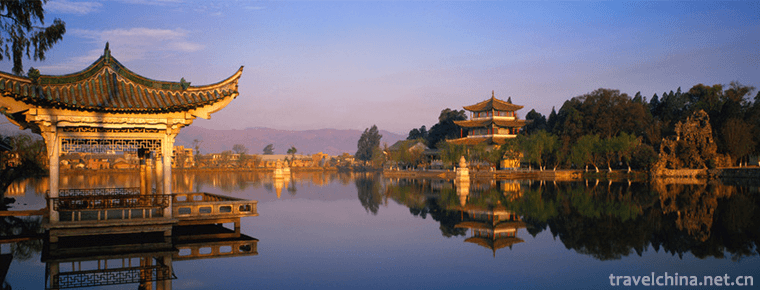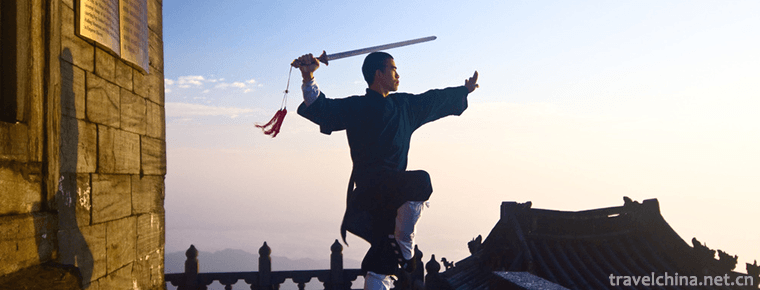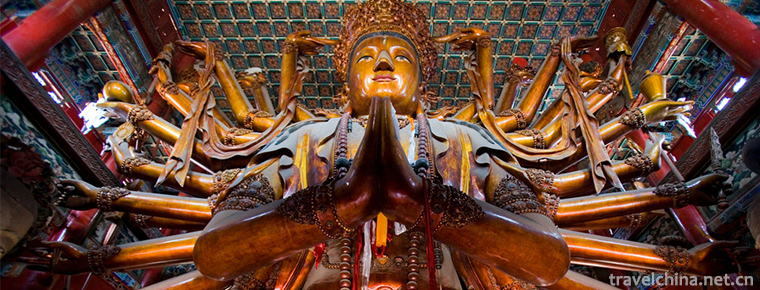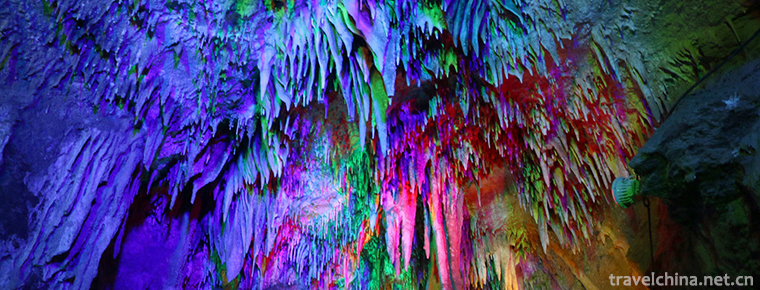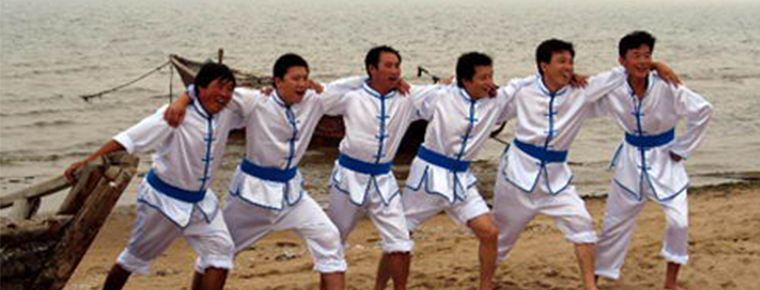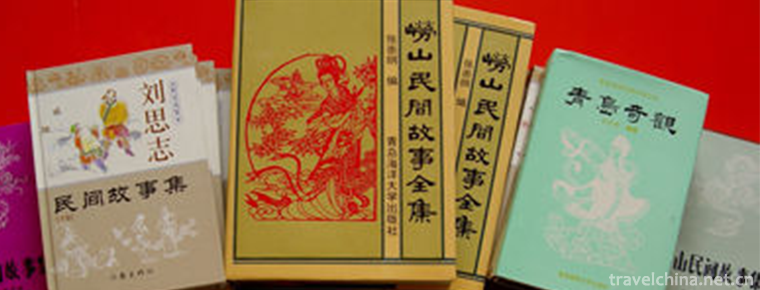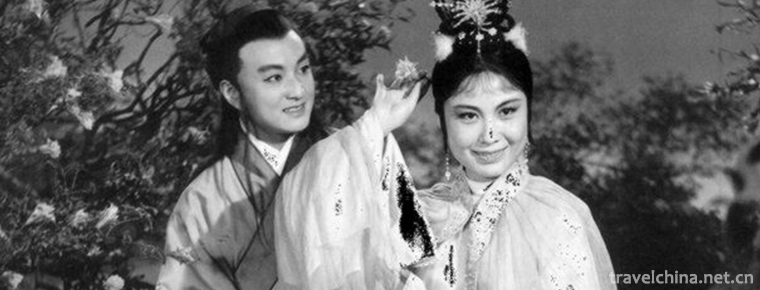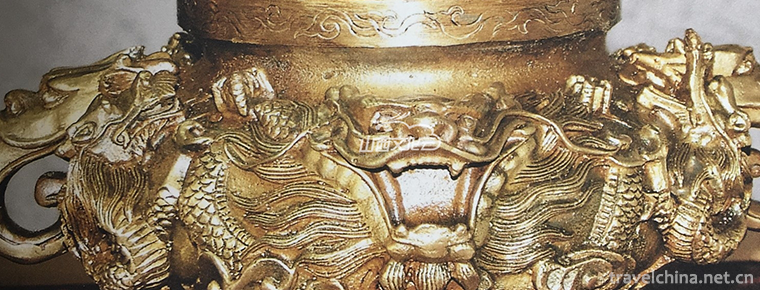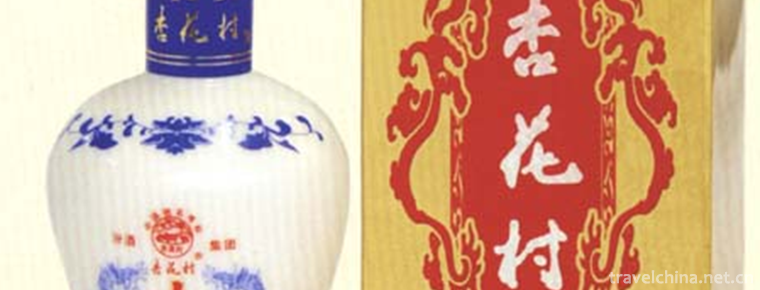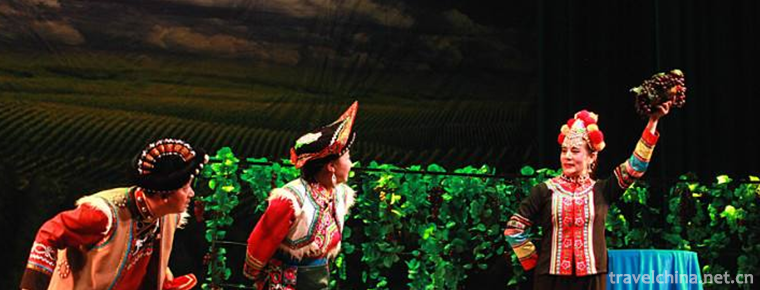Tianlong Tunpu
Tianlong Tunpu
Tianlong Tunpu Town is located in Pingba District, Anshun City, western Guizhou Province. Deep in the mountains of karst landform, Tiantai Mountain and Longan Mountain are two mountains, 72 kilometers away from Guiyang City. Located in the throat of Yunnan Province, this area is inhabited by a distinct Han group - Tunpu people, whose voice, clothing, residential buildings and entertainment are quite different from those of surrounding villages. This unique cultural phenomenon of the Han people is called "Tunpu Culture", and one of the most representative is Tianlong Tunpu. In the Yuan Dynasty, it was an important post station on the historically famous Shunyuan ancient post road, known as "rice cage post". In the early Ming Dynasty, Zhu Yuanzhang transferred a large number of troops from Jiangsu, Zhejiang and Han nationalities to the north and south of Zhenzhen. At the beginning of this century, they were renamed "Tianlong Tunpu" by local Confucians.
Brief introduction of Tunpu
Walking into Tianlong Tunpu is like walking into the lane of dreams. The war 600 years ago has gone with the years. Spring stockade is smart. On the day we arrived, a tour group of 200 people came from Guiyang. The Tunpu girl explained the story of Tunpu and the legacy of Ming Dynasty in authentic Mandarin. Tour guides in scenic spots are all rural girls in Tianlong. They have become a highlight of local farmers'participation in tourism.
The villagers of Tunpu have a familiar saying: the house of Benzhai, the gate of Yunshan Tun and the "model" of Tianlong. The so-called "model" refers to the model of Tianlong's tourism development. On March 5, 2007, Zheng Jinxian, president of Tianlong Peasant Tourism Association, told reporters: "The peasants of Tianlong Peasant Tourism Association came to his home a few days ago and asked to participate in tourism." Now the company has the intention to introduce farmers to the door.
Tianlong Tunpu Ancient Town is located in the throat of Yunnan Province to the west. In Yuan Dynasty, it was the famous Shunyuan ancient post road. Tianlong Tunpu Ancient Town was first a post station on Shunyuan ancient post road, named Fanlangyi. Since the Ming Dynasty, because of the importance of military geographical position, a large number of troops have been stationed here and around. Today, they are still as helpful as ever, and they are still important garrisons. During the reign of Kangxi in the Qing Dynasty, after Fan Chengxun, governor of Yunnan and Guizhou, carried out the policy of "reforming the land and returning to the native land", Tunpu people changed from military households to ordinary people. The ancient town of Tianlong Tunpu was renamed "rice cage shop". Because of the importance of its geographical location, it is still a post station and an important place for stationing troops in the Qing Dynasty.
Tianlong Tunpu Cultural Tourist Area consists of two main tourist attractions, Tiantai Mountain Scenic Area and Tianlong Tunpu Scenic Area, which are distributed within 6 square kilometers of Tianlong Town in Pingba County.
Tiantai Mountain is like a ridge of rocks standing in the field. Although the mountain is not high, it is steep and straight into the blue sky. It's like a high platform in the sky, so it's called. During the Wanli period of the Ming Dynasty, Zhuoxi Tiantai, a monk of Baiyun Temple, built Wulong Temple with wood and stone according to mountain topography. It is known as "the absolute singing of stone", and now it is a key protection unit in China. Tiantai Mountain is a peculiar building, mostly a stone castle. At the beginning of its construction, it has a strong military character. With the passage of time, the military character has been weakened. Tiantai Mountain has formed a sacred place where Buddhism, Confucianism and Taoism are integrated. Walking into Tiantai Mountain is like walking into a magical plant kingdom, which has more than 3000 kinds of plants, vines to shade the sun, Lingzhang to the sky. There are many legends about Tiantai Mountain. Wu Sangui visited his uncle Wu Feng. He once stayed in Wulong Temple with Chen Yuanyuan. Now there are also a sword, a court dress and a court plaque, which are stored in Wulong Temple. When you stand on the peak, there is a platform to win the victory, and the peaks come to sigh.
In the Tianlong Tunpu scenic spot, people wearing large-skinned, wide-sleeved, blue robes can be seen everywhere. They are authentic Han people! Locally, they are called "Tunpu people". Tunpu people are descendants of the army in Hongwu period of the Ming Dynasty. Their history can be traced back to the Ming Dynasty. In order to strengthen their rule in the southwest, Zhu Yuanzhang, the emperor of the Ming Dynasty, built fortresses and garrisoned troops here. Today's Tunpu people are descendants of soldiers who migrated from the interior hundreds of years ago. For more than 600 years, they still retained and inherited the life customs and cultural customs of the Ming Dynasty. The word "tunpu" is actually two concepts -- "tun" refers to the military station, where the army transmits letters, receives officials and family members from and from the army, and "castle" refers to the place where businessmen and ordinary people live. There are fortified bunkers and towering bunkers. Leave triangular observation windows in different directions of the bunker. Now it's still well preserved and standing erect. Up to now, traces of old wars are still dimly visible on the ancient castle. Tunpu villages mostly follow the architectural form of stone villages with the charm of water villages in the south of the Yangtze River. Over the centuries, they have moved towards iteration and change of events, while Tunpu people have stubbornly adhered to the traditions of their ancestors in this corner of Guizhou Province and maintained the culture of the Daming Dynasty. Their costumes are called living specimens of Ming Dynasty costumes. In the first month of the lunar calendar, villagers sit on cold benches and play lanterns, dragon dancing and boating happily. Old people still go to temples to worship Buddha, which is the Han culture.
Tourist guide
Best travel time
Lai'anshun tourism focuses on playing with mountains and rivers, July and August are the best time in summer, and July and August are the flood season of Huangguoshu Waterfall in the world.
traffic
From Guiyang Stadium Passenger Station to Anshun Bus South Station, the whole journey is high speed, 35 yuan. Ticket for Tianlong, 5.5 yuan. That's the bus to Pingba. Take about 40 minutes to the Tianlong intersection (there is a gas station at the intersection). After getting off the train, turn right and walk for about ten minutes on the mountain road. At the intersection of the three forks, you can see the instructions to Tianlong Tunpu and Tiantai Mountain. According to the instructions, you can walk right for about ten minutes, and then you can see the instructions of the scenic spot. Turn left and walk for two minutes until you reach the gate of the scenic spot. You can also take a three-wheeled ride across from the gas station to Tianlong Town at an unknown price.
Ticket Price
60 yuan / person
Travel time
Lai'anshun tourism focuses on playing with mountains and rivers, July and August are the best time in summer, and July and August are the flood season of Huangguoshu Waterfall in the world.
Weather profile
The average temperature is between 14 and 16 degrees Celsius. The climate is mild and pleasant. You can wear regular clothes for traveling here. Huangguoshu Waterfall is abundant in summer, with abundant water and great momentum. In winter, it has less water, and the temperature is generally below 10 C. If it encounters snow or freezing rain, the temperature may be even lower.
Traffic hints
From Guiyang Jinyang Passenger Station to Pingba Bus South Station, the whole journey is high speed, 23 yuan. Ticket for Tianlong, 3.5 yuan. That's the bus to Pingba. Take about 20 minutes to Tianlong Street. Walk for five minutes to the gate of the scenic area and buy tickets to enter the scenic area. Ancient town ticket 35, Ancient town plus Tiantai Mountain pass 60.
Pictures From:
http://bbs.fengniao.com/forum/10528437.html
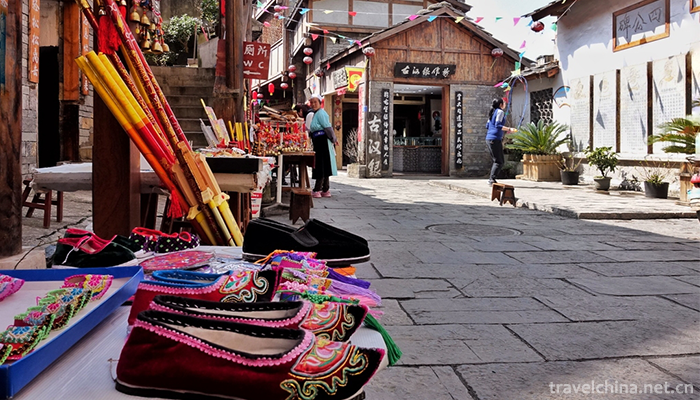
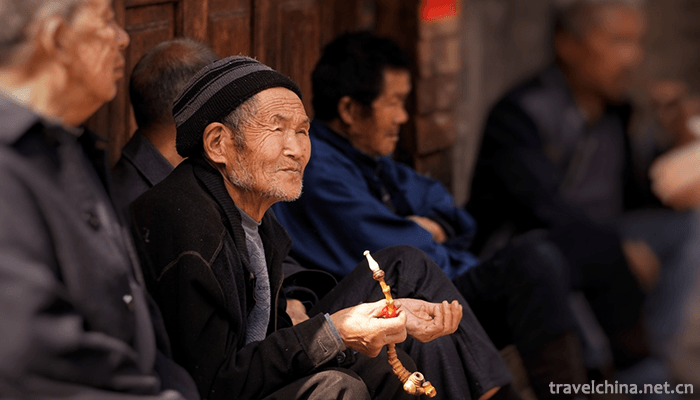
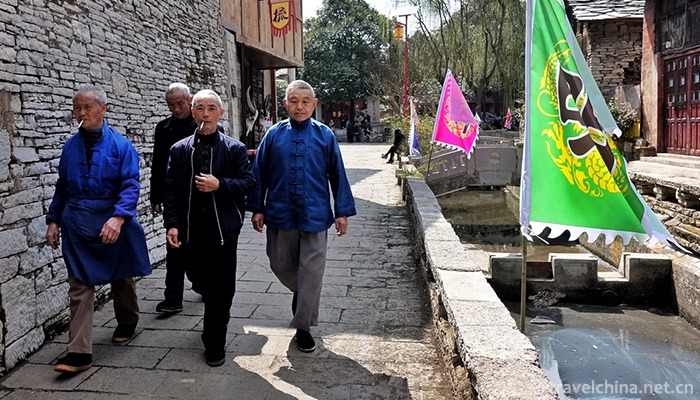
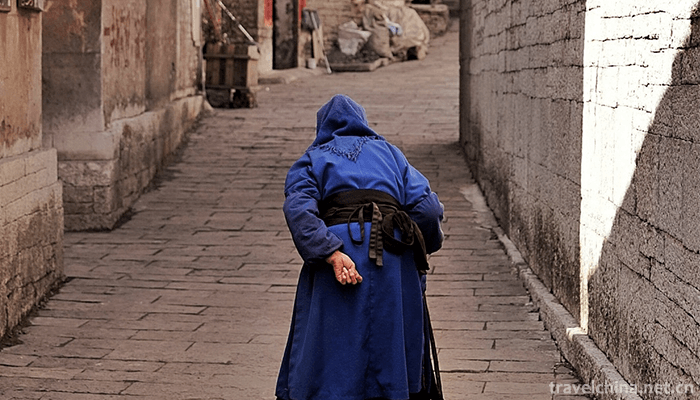
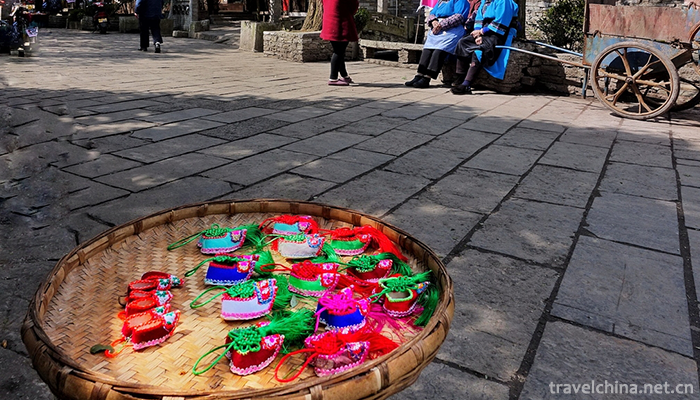
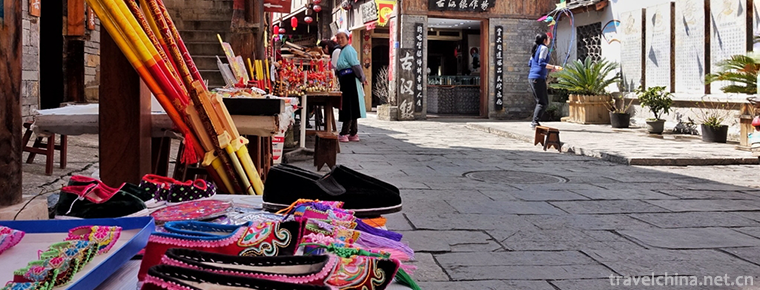
Tianlong Tunpu
-
The classical gardens of Suzhou
The classical gardens of Suzhou / Suzhou classical gardens, referred to as Suzhou gardens, are world cultural heritage, national AAAAA class tourist attractions
Views: 288 Time 2018-12-06 -
Wudang Mountains Scenic Area
Wudang Mountain, the holy place of Taoism in China, is also known as Taihe Mountain, Xieluo Mountain, Shenshan Mountain and Xianshi Mountain. It has been called "Taiyue", "Xuanyue"
Views: 187 Time 2018-12-12 -
Puning Temple
Puning Temple is located in Chengde City, Hebei Province. It was built in the Qianlong period of the Qing Dynasty. The first half of the temple is Han-style,
Views: 181 Time 2019-02-07 -
Yishui Natural Underground Gallery Scenic Area
Yishui Natural Underground Gallery is located in Liuhuyu Township, Dongtou Township, Yishui County, Shandong Province, which is the first ecological town in Yimeng and the hometown of Hongsiao.
Views: 370 Time 2019-03-04 -
Ocean song
Fisherman's chant is the traditional folk song of Zhoushan Islands in Zhejiang Province, which belongs to the general name of the local boat and fisherman's chant.
Views: 96 Time 2019-05-02 -
Laoshan Folk Stories
Laoshan folk tales, commonly known as Lagua, are oral literature created by the local people of Laoshan Mountain in Shandong Province for thousands of years. There were few written records before libe
Views: 132 Time 2019-05-11 -
Legend of Cowherd and Weaver Girl
Niulang and Zhinu are one of the four Chinese folk love legends (the other three are Legends of White Snake, Meng Jiangnu Crying Great Wall, Liang Shanbo and Zhu Yingtai). They derive from the star na
Views: 336 Time 2019-06-08 -
Bronze Ware Making Skills Datong Copper Ware Making Skills
Datong bronze ware is a traditional handicraft of the Han nationality. It has a long history and exquisite craftsmanship. As early as the Northern Wei Dynasty, it enjoyed a great reputation. Since the
Views: 161 Time 2019-06-21 -
Brewing Techniques of Fen Liquor in Xinghua Village
The brewing process of Fen liquor in Xinghua Village is complicated. Fen liquor in Xinghua Village is finally brewed through six main processes: grinding, moistening, steaming, fermentation, distillat
Views: 146 Time 2019-07-08 -
Yi opera
Yi Opera, a local traditional drama in Dayao County, Yunnan Province, is one of the national intangible cultural heritage.
Views: 407 Time 2019-07-12 -
Leshan water resources
There are many rivers in Leshan City, including Minjiang River, Dadu River, Qingyi River and many small and medium-sized rivers. It is a water rich area with an average annual water production of 11.37 billion cubic meters. With 74.14 billion cubic meters
Views: 68 Time 2020-12-17 -
Biological resources in Dazhou
There are more than 400 species of vertebrates in Dazhou City, including 60 kinds of mammals, 230 kinds of birds, 14 kinds of reptiles, 10 kinds of amphibians and 85 kinds of fish. There are 52 species of national and provincial key protected wild an
Views: 373 Time 2020-12-20
